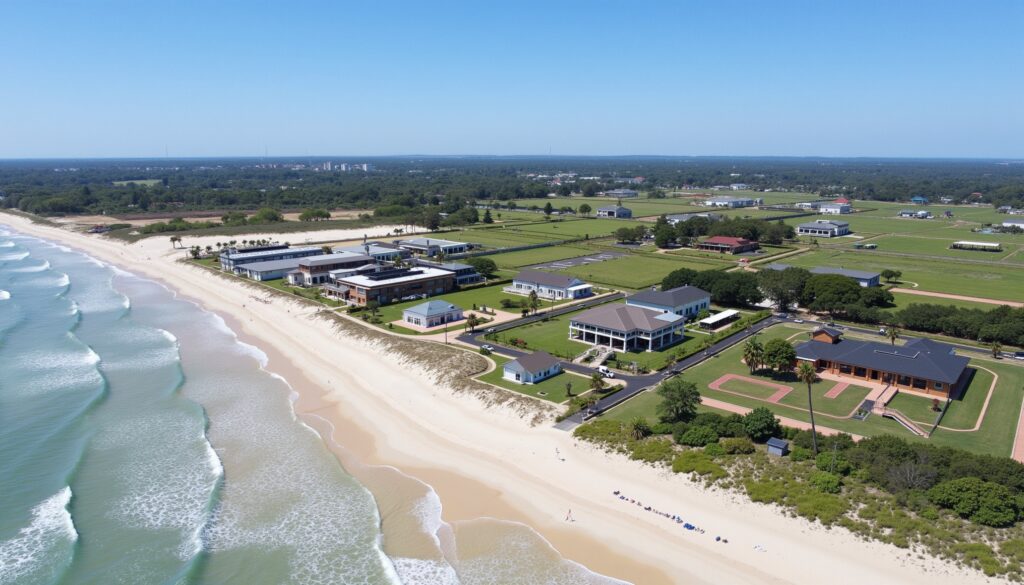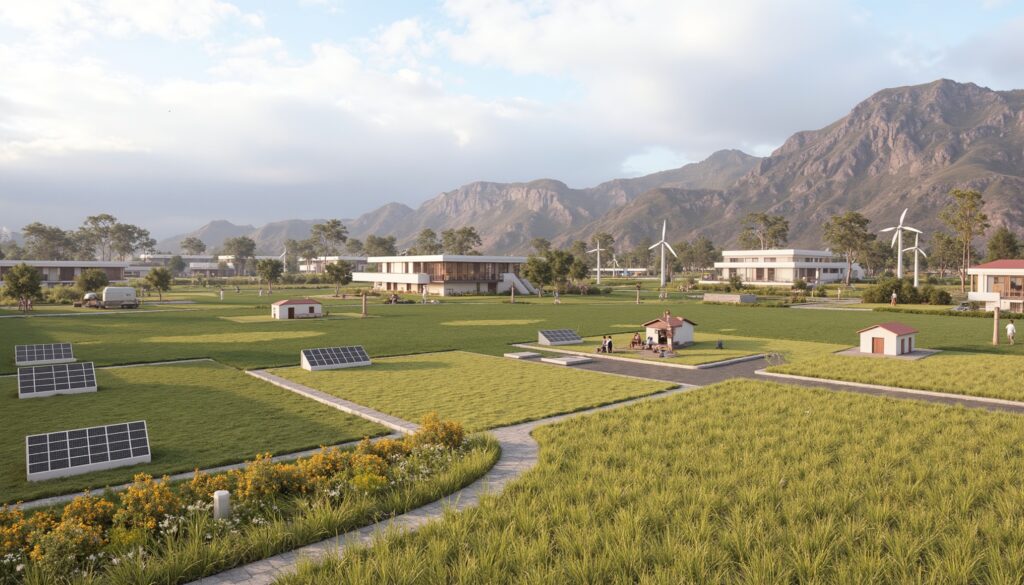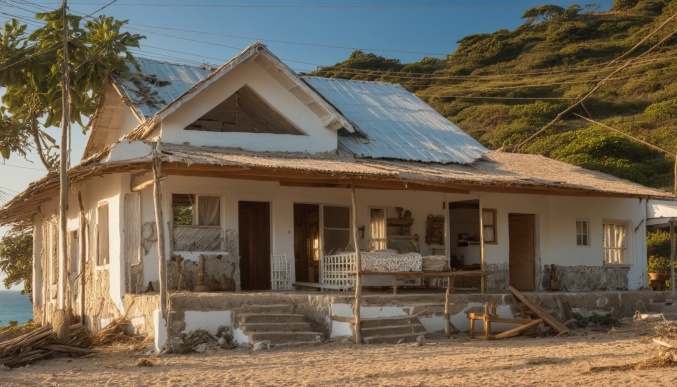Land development opportunities present a compelling landscape for investors and developers seeking to navigate the complexities of real estate.
As urban areas expand and populations grow, the demand for intelligently planned communities becomes ever more critical.
In this article, we will explore the essentials of land development, uncover promising markets, examine zoning regulations, evaluate financing options, emphasize sustainable practices, and highlight successful case studies that demonstrate the immense potential of this sector.
By understanding these facets, stakeholders can better position themselves to unlock the value inherent in land development ventures.

Key Takeaways
- Land development offers significant opportunities for both investors and developers.
- Identifying emerging markets is crucial for maximizing land development success.
- Zoning laws and regulations heavily influence the feasibility of land development projects.
- Exploring diverse financing options can facilitate more ambitious land development initiatives.
- Incorporating sustainable practices can enhance the long-term viability of land development projects.
Understanding Land Development: An Overview
Understanding land development is essential for anyone looking to invest in Costa Rica real estate.
The country has become a hotspot for both local and foreign investors due to its rich natural resources and beautiful landscapes.
Land development opportunities in Costa Rica are vast and varied, ranging from beachfront properties to mountain retreats.
With its favorable climate, growing tourism industry, and stable economy, investors can find immense potential in developing residential, commercial, or mixed-use properties.
Understanding the local regulations and the zoning laws governing land use is crucial; this knowledge ensures that investors can navigate the complex landscape of land development in the region, maximizing their investments while adhering to the necessary guidelines.
By keeping an eye on emerging trends and areas poised for growth, interested buyers can take advantage of the myriad land development opportunities available in this tropical paradise.
Identifying Promising Markets for Land Development
When it comes to identifying promising markets for land development opportunities, Costa Rica stands out as a prime location due to its stunning natural beauty, stable economy, and growing real estate sector.
The country’s unique geography offers diverse landscapes, including lush rainforests, pristine beaches, and mountainous regions, making it appealing for various development projects, from luxury resorts to residential communities.
Moreover, local government initiatives are designed to encourage investment in land development by providing incentives, making it easier for developers to navigate legal and regulatory hurdles.
As more expatriates and investors are drawn to Costa Rica’s favorable climate and lifestyle, specific areas such as the Central Valley, Guanacaste, and the Nicoya Peninsula are emerging as hotspots for land development opportunities.
Investors should also consider socio-economic factors, including population growth and tourism trends, as these can greatly influence the success of land development projects in the region.
‘The future belongs to those who believe in the beauty of their dreams.’ – Eleanor Roosevelt

The Role of Zoning and Regulations in Land Development
When considering land development opportunities in Costa Rica, understanding the role of zoning and regulations is paramount.
This tropical paradise, renowned for its rich biodiversity and stunning landscapes, is also characterized by a complex framework of land-use regulations that can significantly impact development projects.
Zoning laws in Costa Rica dictate how land can be utilized, ranging from residential, commercial, to agricultural purposes.
It’s essential for prospective investors and developers to familiarize themselves with local zoning ordinances, as these rules govern everything from building heights and densities to environmental protections.
Engaging local planners and legal experts can provide insights into the permissible uses of land and highlight any restrictions, ensuring that your development aligns with national and local regulations while capitalizing on the abundant land development opportunities available in this captivating country.
Financing Options for Land Development Projects
When considering land development opportunities in Costa Rica, understanding the financing options available is crucial for ensuring a successful project.
Investors can explore a variety of financing avenues ranging from traditional bank loans to more specialized funding options.
Local banks often provide financing tailored to purchasing and developing real estate, making them a viable option for those looking to invest in land for residential or commercial use.
Additionally, private lenders and investment groups can offer alternative funding solutions, sometimes with a quicker approval process.
Furthermore, leveraging partnerships with local developers could yield not only financial backing but also valuable insights into the Costa Rican real estate market.
Government incentives and programs designed to stimulate economic growth in specific regions may also provide financial relief and support for innovative land development initiatives.
By diversifying financing sources and carefully planning budgets, investors can navigate the landscape of land development opportunities in Costa Rica effectively.

Sustainable Practices in Land Development
As the real estate market in Costa Rica continues to thrive, sustainable practices in land development have become increasingly crucial.
Investors and developers are not only seeking profitable land development opportunities but are also prioritizing eco-friendly solutions that align with the country’s commitment to environmental preservation.
Implementing green building techniques, promoting biodiversity, and engaging in responsible resource management are just a few ways that developers can enhance the appeal of their projects.
Furthermore, embracing sustainable land development not only attracts eco-conscious buyers but also contributes to the long-term viability of local communities and ecosystems.
By focusing on these sustainable practices, property developers can tap into a growing market segment that values sustainability, ensuring that land development opportunities in Costa Rica achieve both economic success and environmental harmony.
Case Studies: Successful Land Development Ventures
Costa Rica has emerged as a hotspot for investors looking into land development opportunities, thanks to its stunning natural beauty, stable economy, and welcoming legal framework for foreign ownership.
One notable case study is the successful transformation of a former agricultural area in Guanacaste into a luxury resort community.
Developers identified the region’s potential for eco-tourism, leading to a collaboration with local government and community stakeholders to create a sustainable development plan.
This project not only enhanced the area’s tourism footprint but also generated local employment and preserved critical ecosystems.
Another successful venture took place in the Central Valley, where a parcel of land was redeveloped into a mixed-use community featuring residential units, shops, and recreational facilities.
This initiative catered to the growing demand for urban living while prioritizing green spaces and sustainable practices.
Investors capitalized on the region’s proximity to San José, resulting in significant returns and impressive community engagement.
These case studies highlight that by embracing local culture and environmental sustainability, investors can unlock a wealth of land development opportunities in Costa Rica.
Frequently Asked Questions
What are land development opportunities?
Land development opportunities refer to the potential for transforming raw land or underutilized properties into residential, commercial, or mixed-use developments.
These opportunities can involve various projects, such as building homes, shopping centers, parks, or office spaces.
How can I identify promising markets for land development?
To identify promising markets for land development, consider factors such as population growth trends, economic indicators, demand for housing and commercial space, infrastructure developments, and zoning regulations.
Analyzing local market conditions and consulting with real estate experts can also provide valuable insights.
What role do zoning and regulations play in land development?
Zoning laws and regulations significantly influence land development by dictating what types of projects can be built, the density of development, and the overall use of the land.
Understanding these regulations is crucial for developers to ensure compliance and to maximize the potential of their projects.
What financing options are available for land development projects?
Financing options for land development can include traditional bank loans, private equity investors, crowdfunding, government grants, and real estate investment trusts (REITs).
Each option has its own requirements, benefits, and risks, so it’s essential to assess which method aligns best with your project’s goals.
How can sustainable practices be integrated into land development?
Sustainable practices in land development can be integrated by focusing on eco-friendly building materials, efficient energy use, water conservation, and preserving natural landscapes.
Implementing sustainable designs not only benefits the environment but can also enhance the appeal of the development to eco-conscious investors and buyers.





